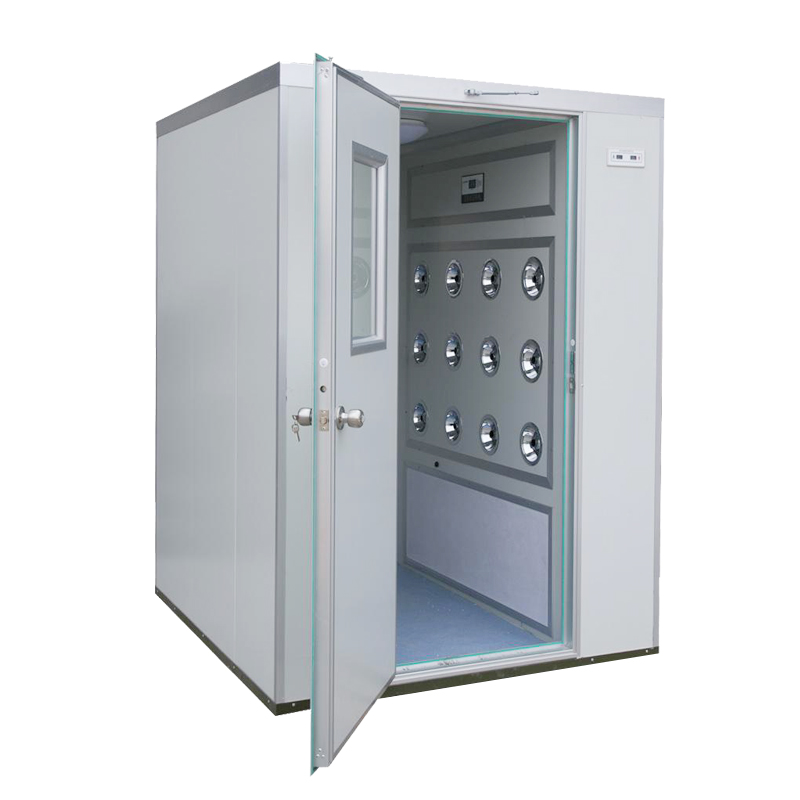

The most significant sources of contamination entering […]
The most significant sources of contamination entering a cleanroom are people and transport carts. While personnel must wear special garments to protect themselves and the products being manufactured, these do not completely shield them from particle generation as they move in and out of a controlled environment. As a result, many methods have been developed to minimize the transfer of these particles from personnel to the products being produced. Cleanroom air showers, which are typically installed at room entrances, use strong bursts of air to dislodge and sweep away particulates from both gowned workers and carts as they enter or leave the cleanroom.
An air shower is an enclosed chamber installed at the cleanroom entrance that uses powerful bursts of air to dislodge particles from gowned workers and transport carts as they enter or exit the cleanroom. The shower has doors on both sides, which cannot be opened at the same time to prevent the influx of outside air that would otherwise increase the amount of contaminants entering the cleanroom. These systems are widely used in semiconductor manufacturing, but they can also be used to decontaminate a person or large material as they pass from a non-cleanroom to a cleanroom.

Cleanroom Air Showers are primarily designed to clean a single individual, but can also be configured as tunnel-like systems that allow multiple people to go through at the same time. When a worker enters an air shower, the system locks the door, and class 100 filtered air is blowing in high-velocity streams that hit the person as they stand in front of the nozzles or slots. The flapping motion of the air against the clothing "scrubs" off any accumulated particulates, and after 4-8 seconds the system purges the contaminated air. After the timer has expired, the second door unlocks and the employee can proceed into the cleanroom.
Although the effectiveness of an air shower largely depends on its proper design and utilization, studies have shown that it is 35 to 90 percent effective in contamination removal. Some of the factors that influence this performance include the type of clothing worn, shower utilization technique, cycle and dwell times, and cleanroom classification.
Another factor that impacts the performance of an air shower is the flooring. Ideally, an air shower should be configured to sit on a raised access floor that is sanitized and sealed to help minimize the spread of contaminants. However, at times height restrictions or handicapped access considerations make this impractical. If this is the case, a permanent-type, sticky flooring should be used to control particulate migration.
Another common feature of cleanroom air showers is interlocking mechanisms that restrict the door from being opened until the complete decontamination cycle has elapsed. This feature helps ensure that personnel follow protocol training and do not rush through the shower without waiting for the appropriate dwell and cycle times to elapse. This feature is sometimes paired with an emergency stop button, which can be activated by the occupant to sound an alarm and stop the decontamination cycle if the power fails.
Our new models offer superb design;competitive prices and their new features give them distinct advantages over similar products from other manufacturers.